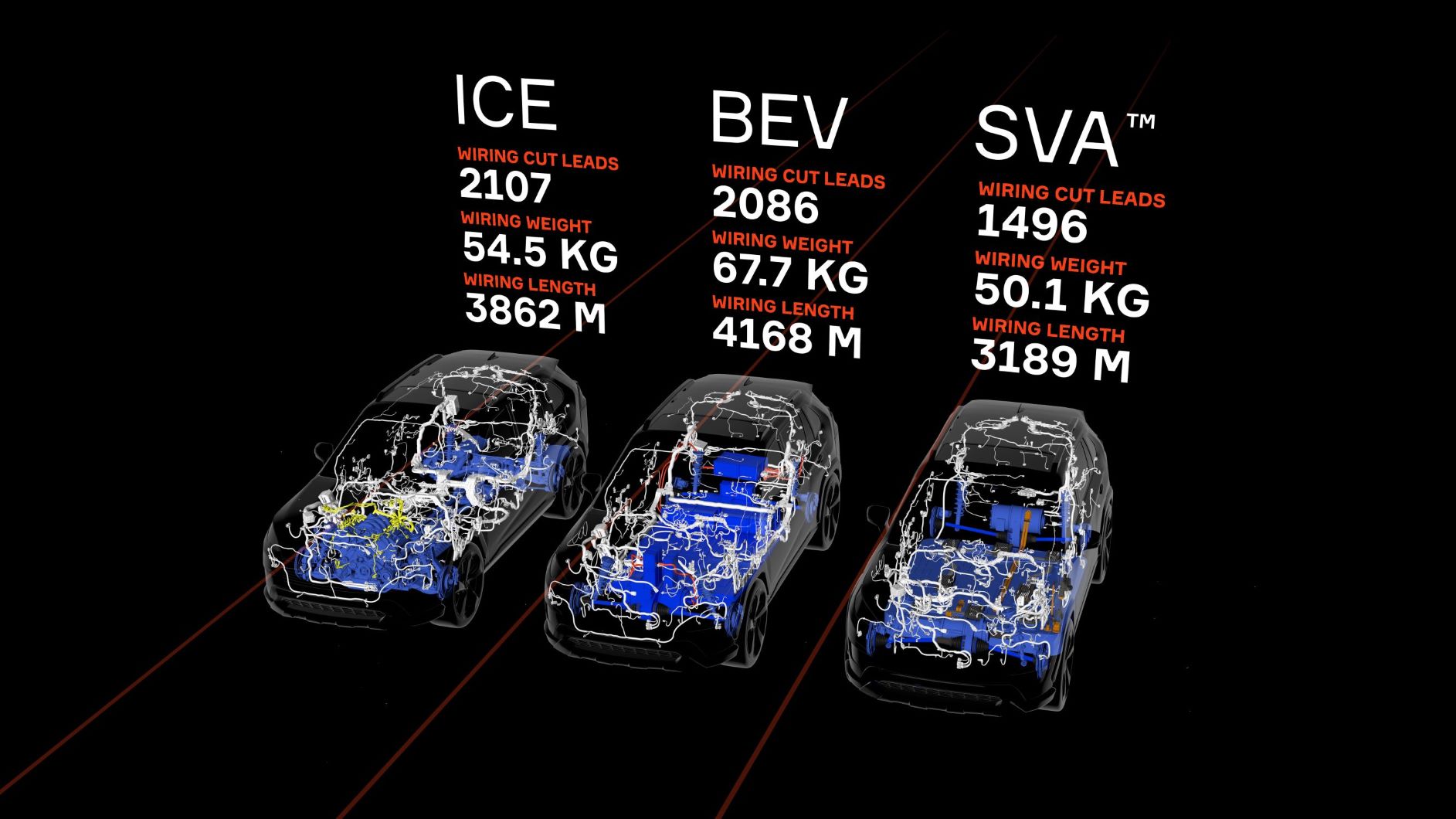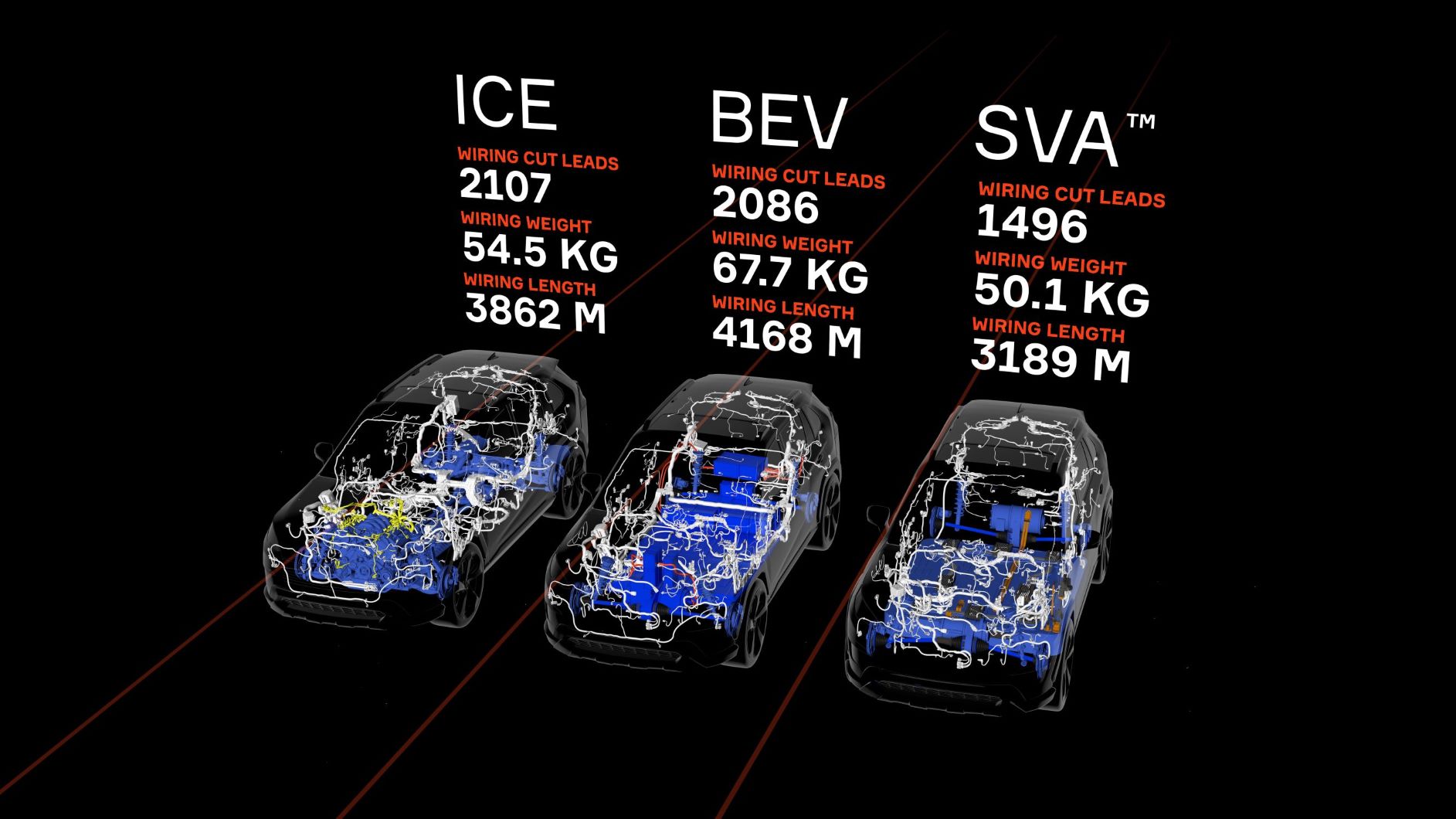Getting Vehicle Architectures From ICE to BEV – and Beyond
With industry momentum to move from gas-powered to electric vehicles increasing, it is no surprise that some OEMs have used their legacy internal combustion engine (ICE) architectures to quickly create battery electric vehicles (BEVs).
On one level, this approach makes sense: Start with what you know, then move on from there. But as we look ahead to an electric future, the approach is not sustainable. Creating a BEV using an architecture designed for an ICE introduces many architectural compromises and inefficiencies that drive up the total cost and weight.
For example, using a typical SUV’s ICE architecture to create a BEV results in a wiring system that is 13 kg heavier than that of the ICE vehicle — even with the entire ICE engine harness removed. The high-voltage cables necessary for the BEV add about 8 kg, and all of the packaging required in order to fit the ICE architecture around the traction battery and drive systems adds the other 5 kg. To use another metric, the topology of the ICE design forces the BEV to use more than 300 meters of additional wire to deliver the same level of functionality.

A technological breakpoint is here
Clearly, the BEV represents a technological breakpoint — one that calls for a new electrical architecture that is specific to electric propulsion. With this in mind, OEMs can deploy an architecture that precisely matches the needs of the vehicle while dramatically lowering the weight and cost of the low-voltage wiring, leading to more sustainable products. Moreover, this architecture can be flexible and scalable, making it readily adaptable to more advanced models.
The first step toward developing a BEV-specific architecture could be a zonal power distribution solution such as a smart electrical center. Smart electrical centers replace traditional melting fuses with smart fuses, and electromechanical relays with solid-state switches — and they are logical locations for up-integration of certain functions. Aptiv recently partnered with a major North American OEM to show that we could remove 2 kg of weight and $40 in costs from each vehicle by using smart electrical centers in this way.
In the next few years, we expect zonal architectures to gain momentum, particularly on EVs, as they help simplify the architecture and further reduce weight. A zonal architecture segments the various physical zones within a vehicle, adding zone controllers as high-speed data and power hubs.
Digging into the design
Architecture tools can help OEMs migrate their designs to a zonal architecture. Starting with the current architecture, engineers can analyze the content, split it into zones and connect devices in each zone to the zone controllers. This allows them to consolidate connections onto fewer wires and determine which functions should be up-integrated into the zone controllers.
Of course, with so many devices and connections in a vehicle, there are many ways to segment an architecture — so the next step is to use evaluation metrics to determine which variant works best.
One such metric is functional availability after a crash. By identifying all the wires and devices within the various zones of the vehicle, designers can map out which functions would be affected by a crash in each zone. Using this information, designers can build a more robust, more resilient BEV.
In an architecture study with a global OEM, Aptiv built two complete, distinct architectures for the same vehicle to provide an apples-to-apples comparison. We found that the up-integration of zone control eliminated more than 9 kg of weight. The zonal architecture eliminated more than 20 connectors and many legacy electronic control units, along with the corresponding overhead of brackets and other supporting hardware.
Simplified wiring means simplified assembly, which enhances the ability of OEMs to automate the process — a critical advantage in a market facing increasing labor pressures in the coming years.
Looking ahead
The zonal architecture also puts OEMs in a good position to continue to optimize further, even as more features and functions are added to the vehicle. Aptiv’s Smart Vehicle Architecture™ approach allows further compute up-integration, establishes a flat power backbone, optimizes the low-voltage wiring and enables even more automated assembly through Dock & Lock™ connectors.
Implementing the full SVA™ approach not only eliminates the extra wiring weight that is added when an ICE architecture is converted to a BEV architecture but also saves an additional 8 percent of wiring weight, 600 cut leads and more than 900 meters of wiring.
The move to BEVs represents a unique opportunity for OEMs to rethink the electrical architectures of their vehicles. By scrapping ICE architectures and beginning anew, they will be better positioned to develop electrical architectures that are economical, lighter weight and more resilient — as well as safer, greener and more connected.

